
HORIZONTAL!” I yell back to my daughter, standing on the stern of the 54-foot W.I. Crealock design The Dove, anchored in Five Islands Bay off Antigua. She’s about to photograph the sunset—holding her iPhone10 vertically. “The world is horizontal!” I yell from the cockpit, my evening’s rum and tonic at hand.
“It’s vertical in my world!” she yells back. “Instagram doesn’t accept landscape mode!”
What do I know? I can’t teach these two kids of mine anything these days. They’re at that age, early 20s, and Dad, well, he’s just too old to understand.
Maybe I am, but I’ve made my living as a photojournalist who tells stories with pictures and words. Photography has been a part of my career since high school and into the US Navy, with a hitch in Vietnam as a JO3 (a journalist third-class petty officer).
In my early 30s, I started a summer school for photographers—not because I had anything to teach, but because I had a lot to learn. I invited photographers from Life and National Geographic to Rockport, Maine, to lead one-week master classes. I learned a lot from those masters. For nearly 50 years, the Maine Photographic Workshops was, and now mainemedia.edu is, an international conservatory for the world’s image-makers, storytellers and filmmakers.
So you’d think I might know something about picture taking.
Well, I don’t. There’s too much to know, still too much to learn. I’m still trying to figure out every new technology. But the process of “seeing photographically” hasn’t changed in a hundred years. It’s not the camera that takes the picture; it’s you.
————————————————-
‘PHOTOGRAPHY IS LIKE ANCHORING.
IT’S LESS ABOUT THE ANCHOR AND
MORE ABOUT THE TECHNIQUE.’
————————————————-
Most of us on boats have a camera or two, and for a variety of reasons: to document our voyages and the destinations when we arrive, to capture the crew in embarrassing situations, and, oh yes, to record those sunsets at sea. We make photographs to share on Facebook and Instagram, to hang on the wall at home, to accompany a written article.
If you are getting serious about becoming a better photographer, I might be able to help.
What makes a photograph
We all make snapshots, even me. But for an image to be a photograph, a visual statement, one that involves a whole lot more than a friend’s face or a pretty sunset, there has to be something else at work.
Creating, finding or arranging a photograph is a juggling act with at least a dozen balls in the air. They include: the center of attention (what the photograph is about); placement (where to put the center of attention in the frame); quality of light (what is illuminated, and what’s hidden in the shadows); graphic composition (lines, spaces, shapes and diagonals); perspective (the illusion of three dimensions), foreground, middle and background; the frame (what’s in and what’s left out); the decisive moment (gesture); motion (stop it, follow it); exposure (shadow and highlight detail); depth of field (selective focus); the horizon line (keep it level); your point of view; and sharpness (focus and a steady camera).
I’m sure I’ve missed a few, but these will do for now. The more you play with these elements, the less you’ll think about them. They become internal, automatic, and you begin to work intuitively. This is where we as artists work, where we discover and develop our own unique visual voice.
“Captain Renaissance” and her dad (now relegated to deckhand) aboard The Dove.
————————————————-
Getting better as a photographer, or to get better at being lucky as a photographer, is simple. You have to go out and make more photographs. Besides, it’s fun to just wander the streets or beaches on a remote island with your camera and see what you find. Some people bring back driftwood, stones or shells. Photographers bring back images.
Photographs, so the story goes, are realized three times: first, when seen through the viewfinder, then again on the light table or screen as you review your day’s work to find the one or two frames that stand out, and third, when those selected images are crafted and added to your portfolio or hung on the wall.
Just go out and see what you see. This is not serious work. This is play. Musicians use études to practice fingerings on their instruments. Photographers have a raft of études to practice as they develop their eye and camera skills.
For a photographer, études include: doors, walls and windows (arrange rectangles inside the frame, play with relationships and space); morning and evening light (mixed with storms and rain); motion (long exposures to blur, one-thousandth of a second to stop motion); one color dominating (but with one or two others to complement it); portraits (always better in shade because faces are softer and people are not squinting); jungles and gardens (always better after it has rained and the vegetation is wet); suspense (people, boats and things just coming together, not yet touching); negative space (nothing there, yet it says something about the subject); trapped spaces (triangles, diagonals and perspective lines); putting something in the foreground (to create three dimensions); playing with the horizon (what the top, middle and bottom of the frame each say about the scene); same scene, another day (different light, different shadows); and sea surfaces (reflections, distortions, riddles).
Looking at your photographs
The only way to get better is to look at, and study, your own work. If you listen, your work will tell you what you’re doing right and, more important, doing wrong. In the process, you’ll make mistakes, and it’s from these mistakes that we learn the most. If you hate making mistakes, don’t call them mistakes. Call them an attempt, a test, an exercise, practice. It’s all part of the learning process.
While you are looking at your own work, look at what other photographers are doing too. The marine photographers I meet at regattas, races and boat shows are professionals. They make their living photographing boats and the yachting scene. Take a look at how they have seen our world on the water. Try to copy them. Painting students are required to copy their masters, in the process mastering technique. We can do the same.
———————————————-
IT’S NOT THE CAMERA THAT TAKES THE PICTURE;
IT’S YOU.
———————————————-
Not going to a regatta, race or boat show anytime soon? Google these photographers and explore their websites: Billy Black, Benjamin Mendlowitz, Onne van der Wal, Corey Silken, Alison Langley, and me at dhlyman.com.
Case in point
I’ve been mentoring a photographer, Justyna Kramer. She’s the mate on The Dove, which charters in the Caribbean. For the past three years, I’ve watched her learn to find her voice as a photographer. She has discovered that she sees the world better in black-and-white than in color. That realization led her to a self-imposed assignment during quarantine in the Grenadines: upload five newly seen images to Facebook and Instagram each week. Kramer revisited images shot long ago, discovering that when they were converted into black-and-white, they jumped out. Then, ashore on the islands, she made new images, converting them to black-and-white as well. She has assembled this body of work into a series of online portfolios. You can see her work at justynakramer.myportfolio.com and use it as an example to assemble your own portfolios as well.
Building a body of work is what all artists do for ourselves, our inner artist. Themes might include landscapes, architecture, people, events, boats and harbors. No one pays us to do this, but we do it to get better. Someday, maybe someone will pay us.
Go out with your camera, even your smartphone camera, and find pictures that you can bring back to look at. Do this daily. Or at least weekly. When you have a portfolio of 20-plus images, take a one-week workshop or master class. Find one that requires a portfolio to attend. That way, you’ll likely be with other serious and accomplished photographers.
And share your images, your exploration of the visual and inner world. Doing so can be more than a career; it can even be a form of medication or therapy.
David H. Lyman is an author, photojournalist and sailor. He launched a school for photographers in Rockport, Maine, in 1973 and turned it over to Maine Media in 2007. See more of his work at dhlyman.com.
Sundown in Saint-Pierre, Martinique. Professional photographer David Lyman recommends: “Instead of looking at the setting sun, turn and look at what the setting sun illuminates.”




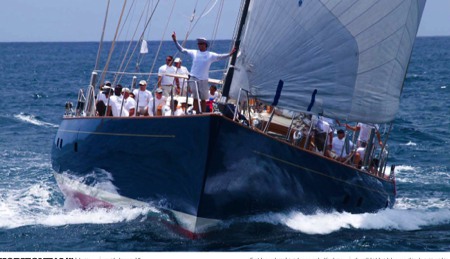
What's In
My Camera Bag?
As a photojournalist, I travel light. But what I carry serves me well just about anywhere.
Here's an article on my gear, working methods and techniques.
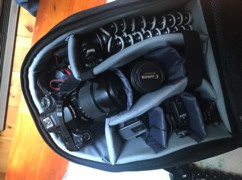
CAPTURE THE CRUISING LIFE
Story and Photos by
Davod H.Lyman
This article appeared in the April 202 edition of Cruising World Magazine

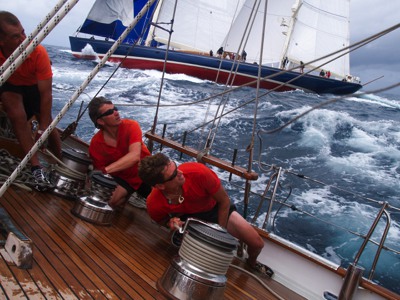
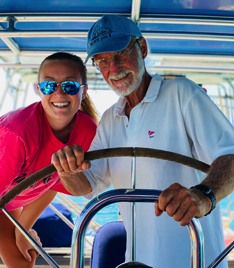
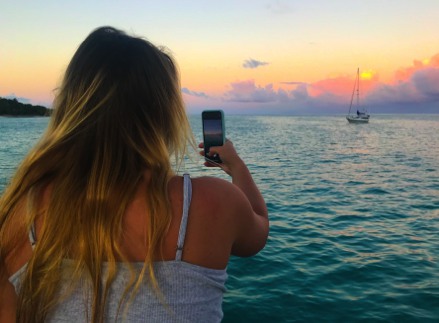
Bow on! Fill the frame with action, color and a gesture, like the one seen here where the bowman’s hand on Rebecca punches through the horizon line.
Antigua Classic Regatta gets underway in 25-knot trade winds. Placing sails in the frame is a jigsaw puzzle.
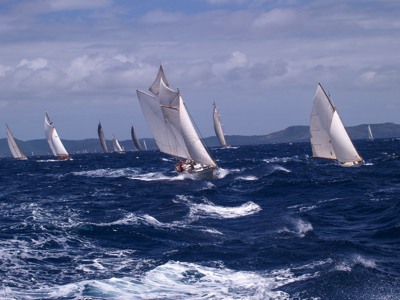
Action aboard Achaniti.Color and body posture bring the center of attention to the winches. The ketch Rebecca slides by on the horizon, creating three dimensions.
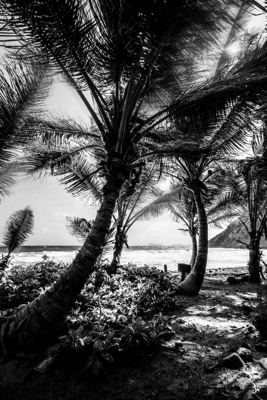
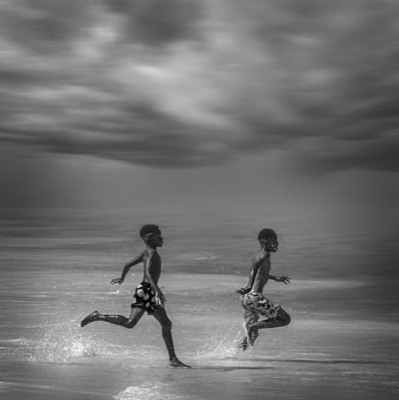
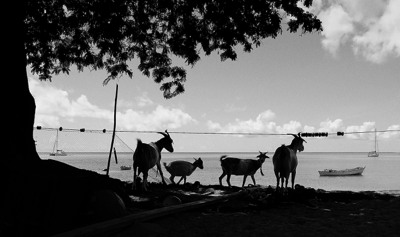
Justyna Kramer's Portfolio
The Caribbean In Black & White